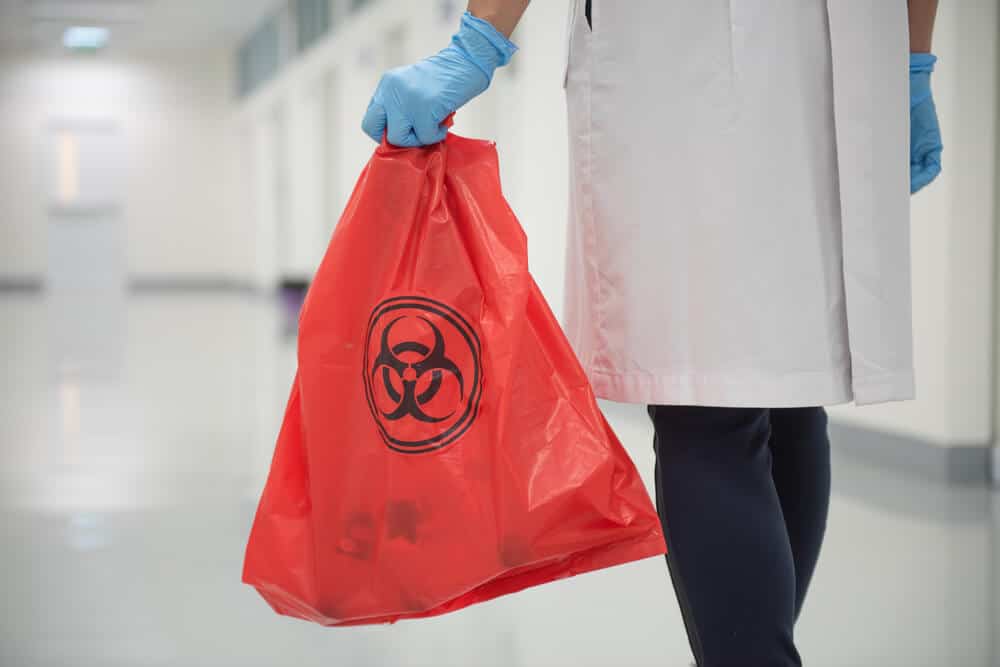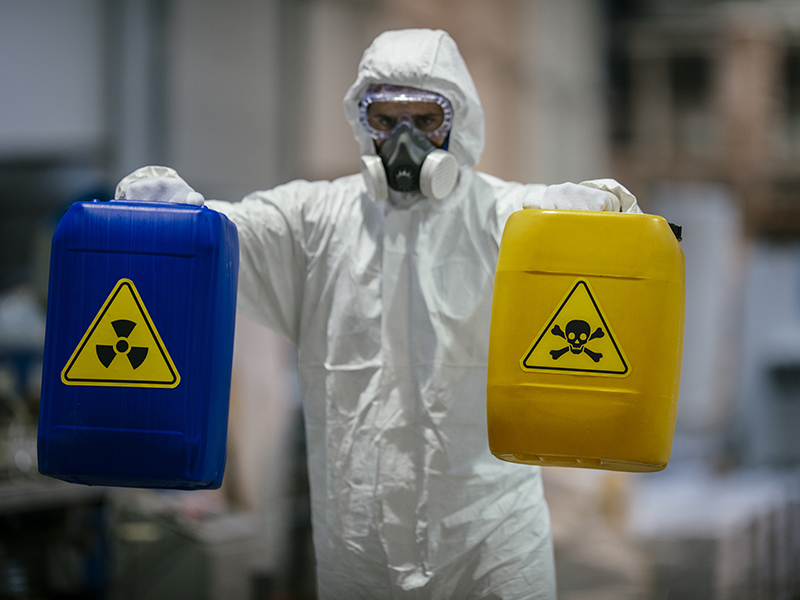Specialist Biohazard Cleaning and Purification for Blood, Bodily Fluids, and Hazardous Materials
The potential wellness dangers associated with exposure to biohazards emphasize the critical demand for meticulous handling and comprehensive clean-up. As we browse the detailed landscape of biohazard clean-up, understanding the nuances of guidelines, compliance, and the specific tools at play comes to be necessary in making sure a risk-free and complete decontamination process.
Wellness Threats of Biohazard Exposure
Exposure to biohazards positions significant wellness threats that can cause extreme effects for people and neighborhoods alike. Biohazards include a large range of organic substances, including blood, bodily fluids, mold, germs, viruses, and various other potentially transmittable products. When people enter into call with these biohazards, whether via mishaps, improper handling, or environmental exposure, they deal with the danger of having major ailments or diseases.
One of the main wellness risks linked with biohazard exposure is the transmission of contagious conditions. Bloodborne microorganisms such as HIV, hepatitis B and C, and various bacteria can be present in biohazardous materials, positioning a straight threat to human wellness. Inhaling air-borne biohazards like mold and mildew spores or coming into contact with contaminated surfaces can additionally bring about respiratory system issues, allergies, and various other unfavorable wellness effects.
In addition, biohazard direct exposure can have lasting health and wellness effects, with some diseases manifesting years after the first contact (Blood Cleanup). For that reason, it is crucial to focus on correct biohazard cleansing and decontamination to mitigate these health threats and make certain the security of individuals and communities

Specialized Training for Biohazard Cleanup
When it pertains to handling biohazard cleaning efficiently and safely, specialized training plays a basic function in ensuring appropriate purification treatments are followed. Biohazard cleaning requires details expertise and abilities to effectively minimize dangers associated with bloodborne virus, physical fluids, and dangerous materials. Specialists learnt biohazard cleanup undergo rigorous instruction on how to safely deal with, remove, and take care of biohazardous materials to avoid contamination and direct exposure.
Specialized training for biohazard clean-up covers a series of important subjects, including correct individual protective tools (PPE) usage, bloodborne virus understanding, decontamination methods, and contaminated materials disposal procedures. Individuals trained in biohazard cleaning are equipped with the essential expertise to analyze contamination degrees, recognize possible dangers, and carry out suitable cleaning treatments in conformity with governing criteria.
Constant training and education are paramount in the area of biohazard clean-up to remain updated on the latest decontamination technologies, safety procedures, and laws. By spending in specialized training, biohazard cleanup experts can properly react to emergency situation clean-up circumstances and secure both public health and wellness and the atmosphere.
Significance of Appropriate Decontamination Methods
Utilizing proper purification methods is vital in biohazard clean-up to efficiently decrease and get rid of dangerous materials health and wellness threats. Efficient purification not only guarantees the elimination of noticeable traces of blood, physical liquids, and various other biohazards however additionally Homepage targets invisible microorganisms that may posture serious health hazards otherwise correctly eliminated. By complying with rigid purification protocols, trained specialists can considerably decrease the danger of direct exposure to unsafe microorganisms, infections, and bacteria that might cause infections or diseases.
Appropriate decontamination strategies include making use of customized tools and anti-bacterials that are particularly made to neutralize biohazards effectively. Comprehensive cleansing and disinfection of contaminated locations are necessary to stop the spread of pathogens and make certain a safe environment for residents. Furthermore, the right disposal of biohazardous waste complying with decontamination procedures is crucial in preventing contamination of various other surface areas or people.

Tools and Devices for Safe Cleanup
When dealing with blood, physical fluids, or unsafe materials, biohazard cleansing professionals count on specialized equipment to reduce exposure risks and thoroughly decontaminate the damaged area. In addition, biohazard cleaning sets consisting of disinfectants, absorbing materials, and biohazard bags are utilized to securely dispose and contain of infected items.
Advanced cleaning tools like hospital-grade anti-bacterials, HEPA-filtered vacuum cleaners, and fogging makers are used to sanitize surfaces and get rid of biohazards effectively. Specialized equipment such as sharps containers and biohazard garbage disposal containers are utilized to safely manage sharp items and biohazardous waste materials. By utilizing the appropriate devices and tools, biohazard cleaning experts can guarantee a thorough cleaning procedure that focuses on safety and decreases health and wellness risks for both workers and occupants of the afflicted area.
Laws and Compliance in Biohazard Cleansing
Proper adherence to regulations and conformity requirements is paramount in biohazard cleaning to guarantee the safety of both see here personnel and the environment. Government companies cleaning scene of crime such as OSHA (Occupational Security and Wellness Administration) and the EPA (Epa) have actually established certain guidelines for biohazard clean-up treatments to minimize health and wellness dangers and environmental contamination. These laws cover a variety of elements including the handling, transport, and disposal of biohazardous materials, as well as the necessary training and safety equipment needed for employees associated with the cleaning procedure.
Biohazard cleansing firms need to stay updated with these laws to assure that their procedures fulfill the needed safety criteria. Failure to follow these guidelines can lead to severe consequences, consisting of penalties, lawsuit, and endangering the health and wellness of people and the setting. By adhering to rigorous laws and compliance measures, biohazard cleaning firms can successfully reduce risks and make sure a comprehensive and safe cleanup process for all parties included.
Conclusion
To conclude, biohazard cleaning and decontamination call for specialized training, appropriate strategies, and adherence to regulations. Direct exposure to blood, physical liquids, and harmful products poses significant health dangers, making it crucial to utilize the appropriate equipment and devices for safe cleanup. By following stringent protocols and guidelines, experts can efficiently mitigate the dangers connected with biohazard exposure and ensure the safety of both themselves and others.
As we navigate the elaborate landscape of biohazard clean-up, understanding the subtleties of regulations, conformity, and the specialized devices at play ends up being necessary in guaranteeing a comprehensive and secure decontamination process. (Blood Cleanup)
When it comes to managing biohazard cleaning successfully and securely, specialized training plays a fundamental duty in making certain proper purification procedures are followed.Utilizing correct decontamination strategies is essential in biohazard clean-up to effectively eliminate harmful products and lessen wellness dangers. Additionally, biohazard cleaning packages including anti-bacterials, absorptive materials, and biohazard bags are utilized to securely get rid of and contain of infected products.
Federal government firms such as OSHA (Occupational Safety And Security and Health And Wellness Management) and the EPA (Environmental Defense Company) have developed certain guidelines for biohazard cleanup treatments to decrease wellness threats and environmental contamination.